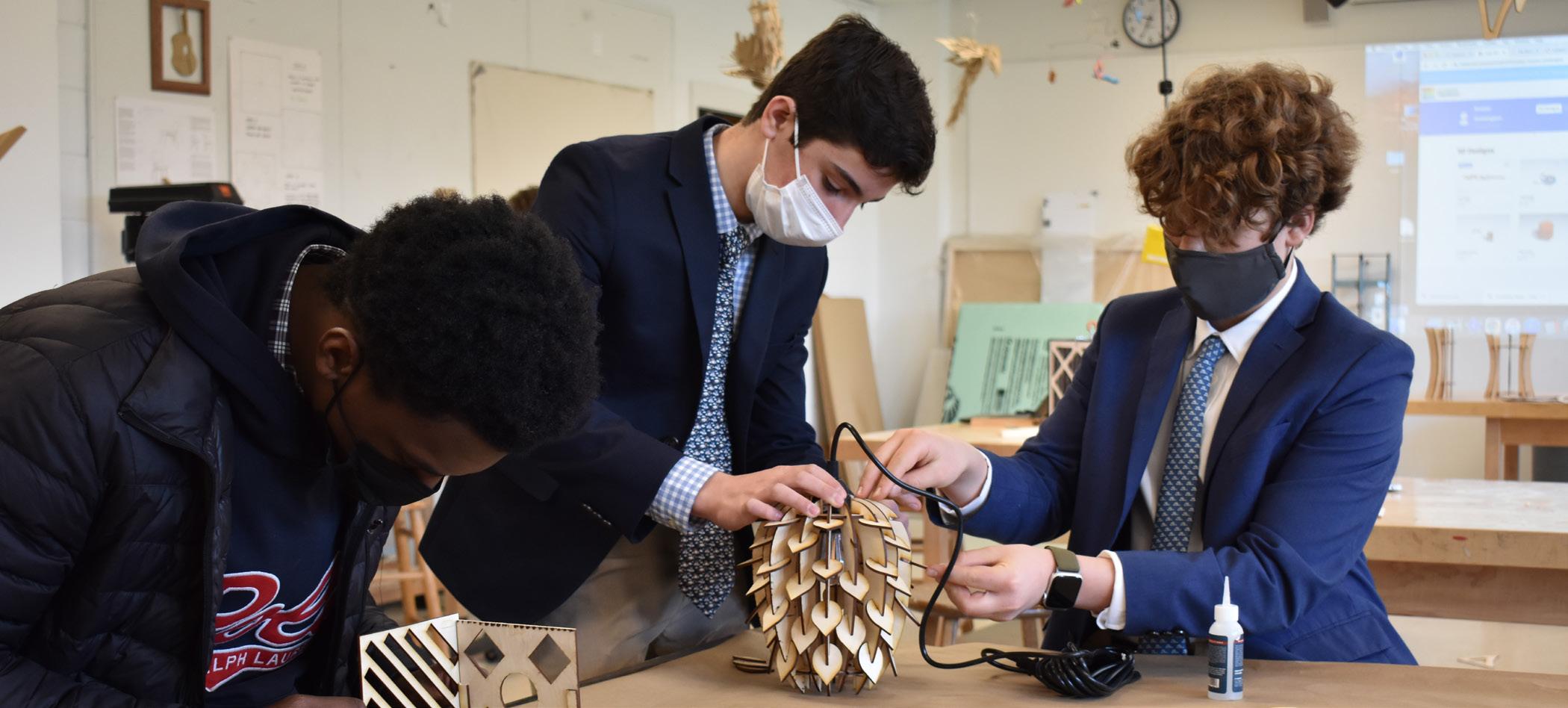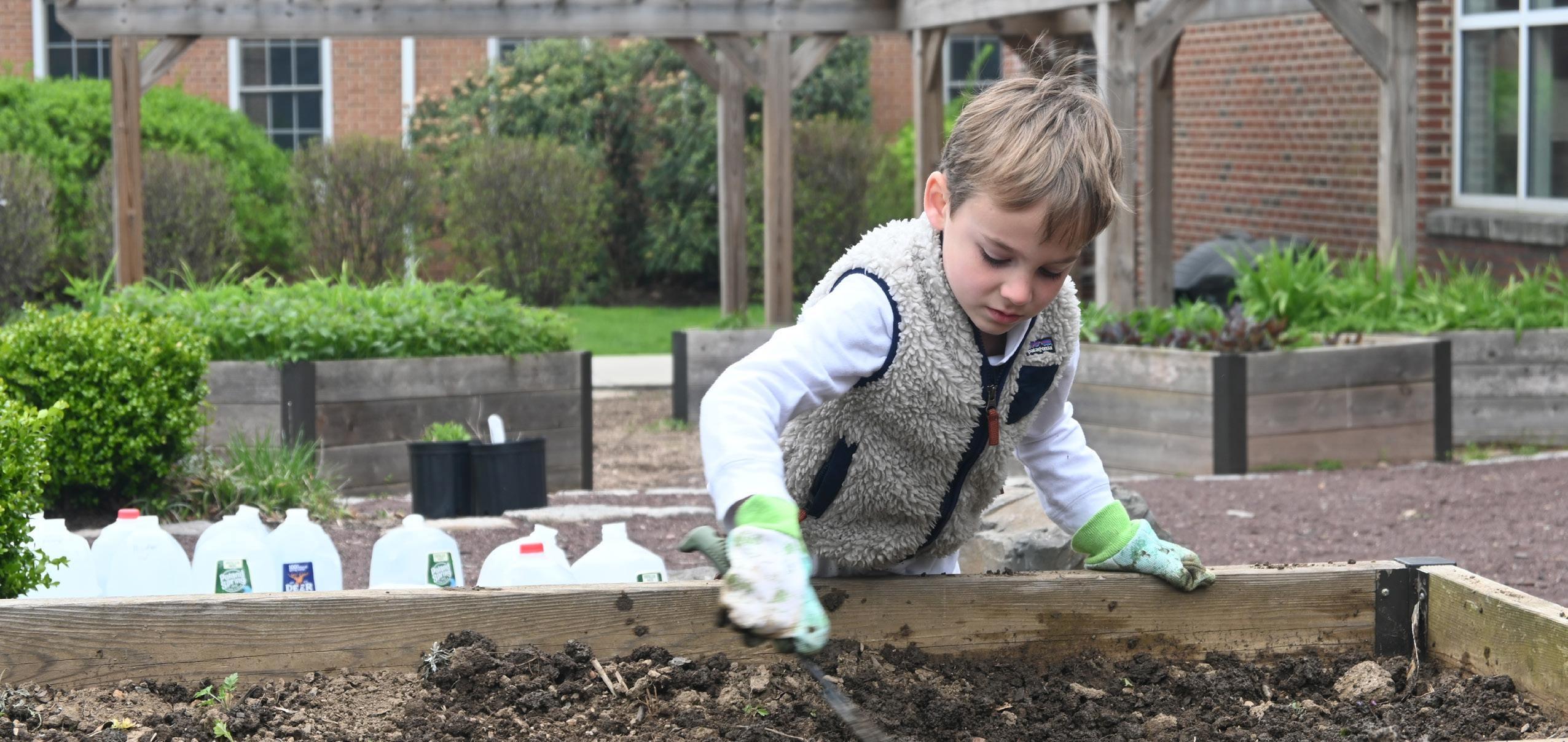
7 minute read
Arts
CURRICULUM SPOTLIGHT: LOWER SCHOOL SCIENCE Amplify Science
The Lower School science curriculum is based on a program called Amplify Science, which uses a mix of hands-on experiments, digital tools, and literacy skills. While the curriculum was first introduced in 2020, the hands-on nature of the program was interrupted by COVID-19.
“Amplify is a literacy-based science curriculum that focuses on expanding a student’s language and literacy skills, while also providing them with a multitude of opportunities and activities that encourage them to develop their natural curiosity about their world and to think like a scientist,” said Head of Lower School Dr. Pam Greenblatt.
Boys in Lower School science teacher Eve Schwartz’s class have explored a range of scientific topics this year, including electricity, light and sound, and the environmental impact of pollution as it relates to water.
Students in her kindergarten class have also completed a year-long scientific goal this year: welcoming Monarch butterflies to the Quad. As part of their unit on plants and animals, the boys started by prepping the grounds back in the fall by weeding and taking steps to promote growth in the butterfly garden on campus.
“The boys had to utilize hands-on investigation, outdoor exploration, and make literacy connections to learn what was going to best support their garden,” said Schwartz. “This spring, they continued their investigating by exploring what it means for a plant to grow, and what the ideal conditions are to produce a flourishing garden that welcomes butterflies.”
Lower School boys in grades pre-kindergarten through fourth grade have science with Eve Schwartz. Below, a sample of the units she and her young scientists explored this year:
Kindergarten
PLANTS AND ANIMALS
Boys explored the needs of plants and animals, and how humans impact the environment in different ways. LIGHT AND SOUND
Collaborating with Lower School art teacher Molly Porter, students created artwork showcasing transparency. Second Grade
WATER
Boys explored runoff, pollution, and how water flows. BALANCING FORCES
Students investigated chain reactions and experimented with magnets. Fourth Grade
VISION AND LIGHT
The boys undertook an eyeball and chicken wing dissection to explore this unit.
Seniors finish their Haverford experience with a taste of the real world
Each year Sixth Formers are tasked with an end-of-the-year assignment that gives them an opportunity to explore life after Haverford. These graduation projects take place during the last three weeks of the school year and the boys have four options they can pursue.
INTERNSHIP—Some students like to use this time to explore a professional setting or gain experience in a particular field INDEPENDENT PROJECT—This is an intensive study of a subject or personal interest. Examples include learning a new language, taking cooking classes, or painting a mural. SERVICE PROJECT—In conjunction with the Haverford Service Learning office, students volunteer their time to make a positive contribution to their community. SPRING STUDY—During spring study, boys complete three one-week courses on the transition from high school to college and the real world. During week one, the boys learn strategies to succeed in college. Throughout week two, boys listen to alumni presenters about their career paths. Finally, week three is known as “life skills week” where the boys learn “25 things all men should know.”
“The graduation project program is an important part of what we do here in the Upper School,” explained Upper School history teacher and graduation projects coordinator Tim Lengel ’07. “By going out into the wider world and applying the many lessons they’ve learned here at school, our students begin to make the transition from Haverford student to Haverford man.”
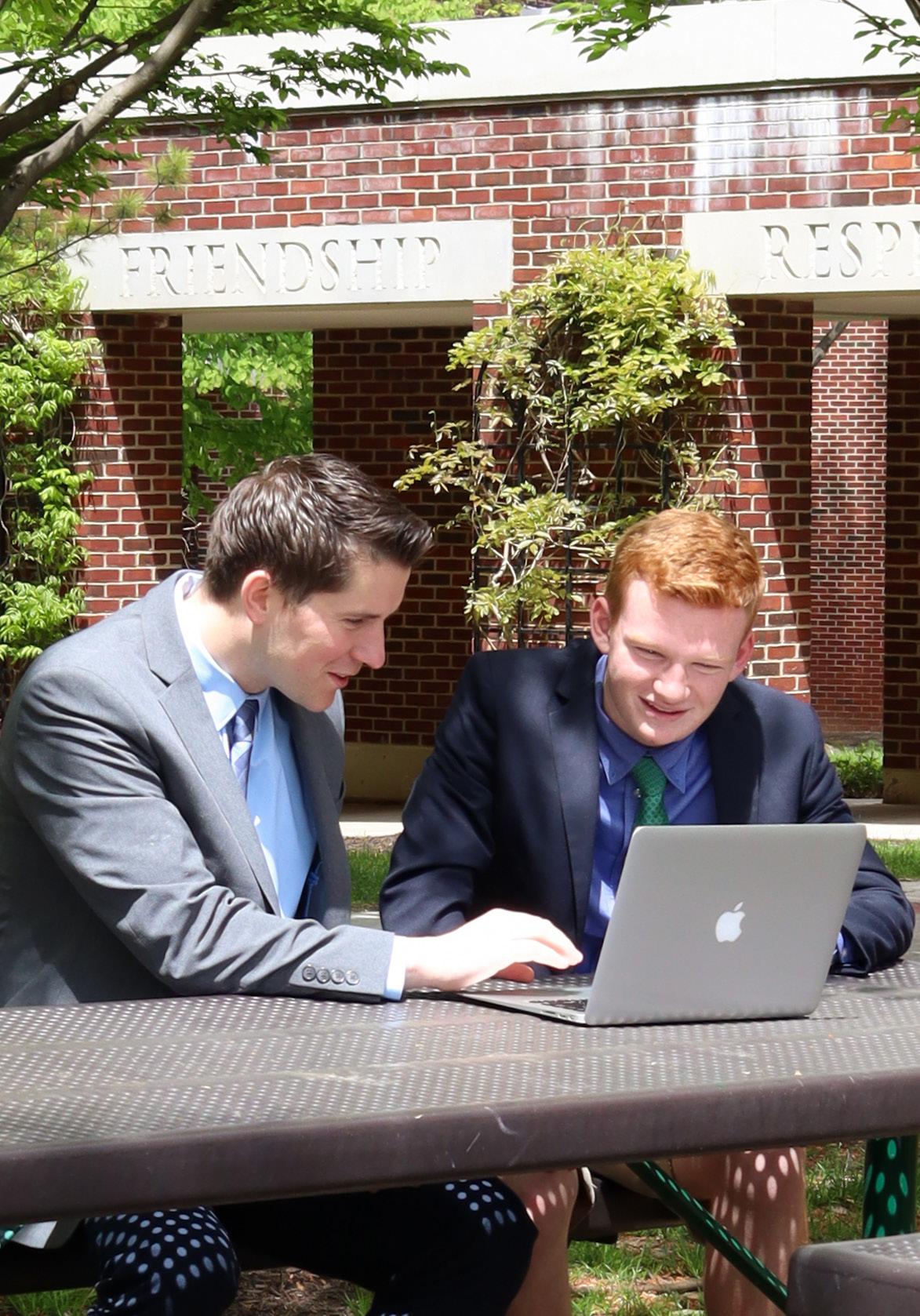
Six steps to LAUNCH
From the State Fair in the fall to the Walk for Water in the spring, second graders engage the process of design thinking and the LAUNCH cycle in projects that are meaningful, relevant, and fun. Design thinking is a creative-thinking process that encourages both problem solving and risk taking, while the LAUNCH cycle includes six steps that build confidence in presenting to an audience. These steps include:
Look, listen, and learn Ask a ton of questions Understand the process or problem Navigate ideas Create a prototype Highlight and fix
As second grade teacher Cheryl Saunders explains, “This cycle allows students to understand the impact they can make on the world and to empower them to believe in themselves.”
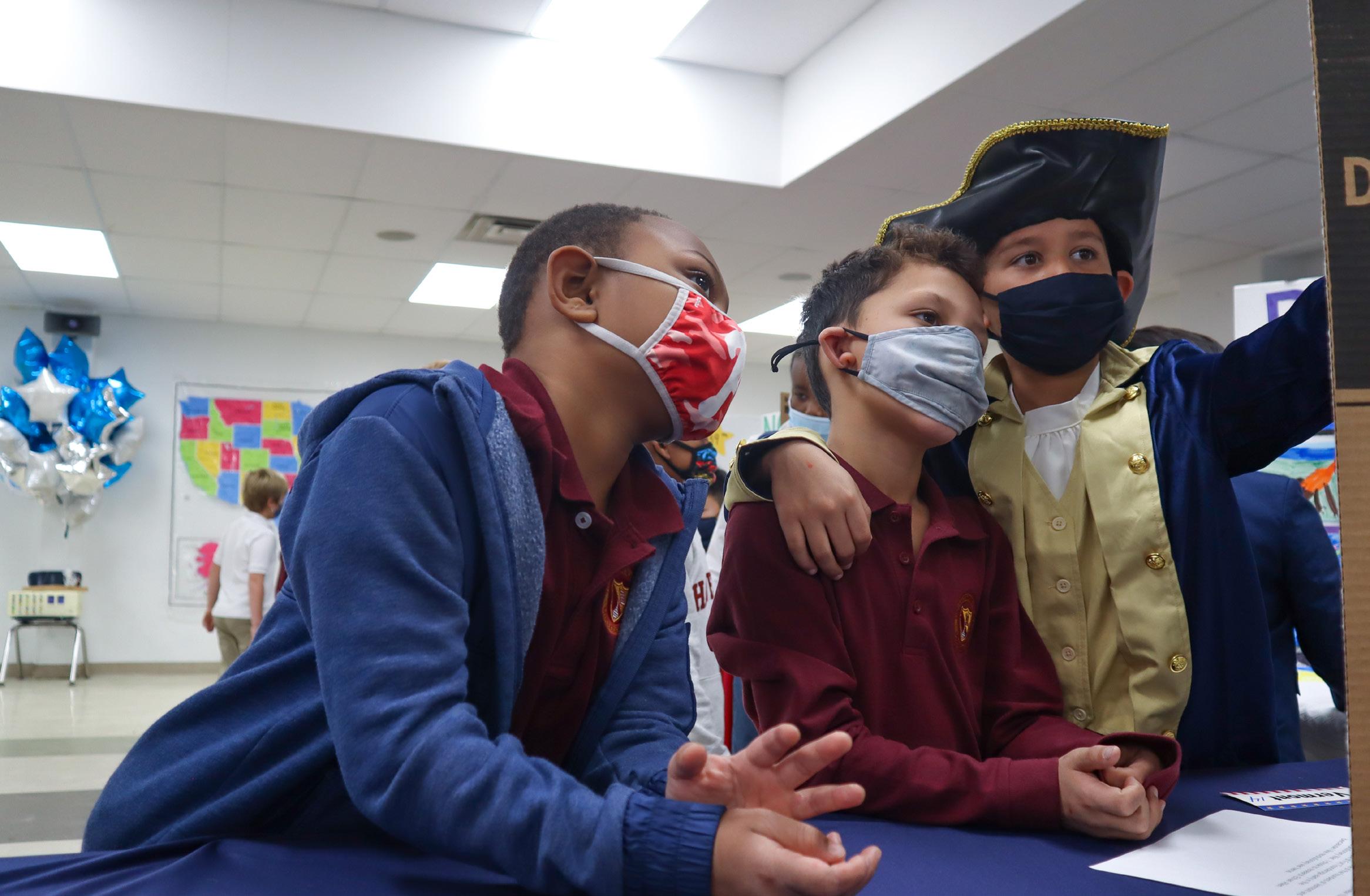
(photo) At this fall’s State Fair, second grader Ayden Robbins, dressed as Revolutionary War hero Ethan Allen, presented his research on the state of Vermont to his first grade audience: his brother, Cole Robbins, and Benjamin O’Hara.
Something Rotten!
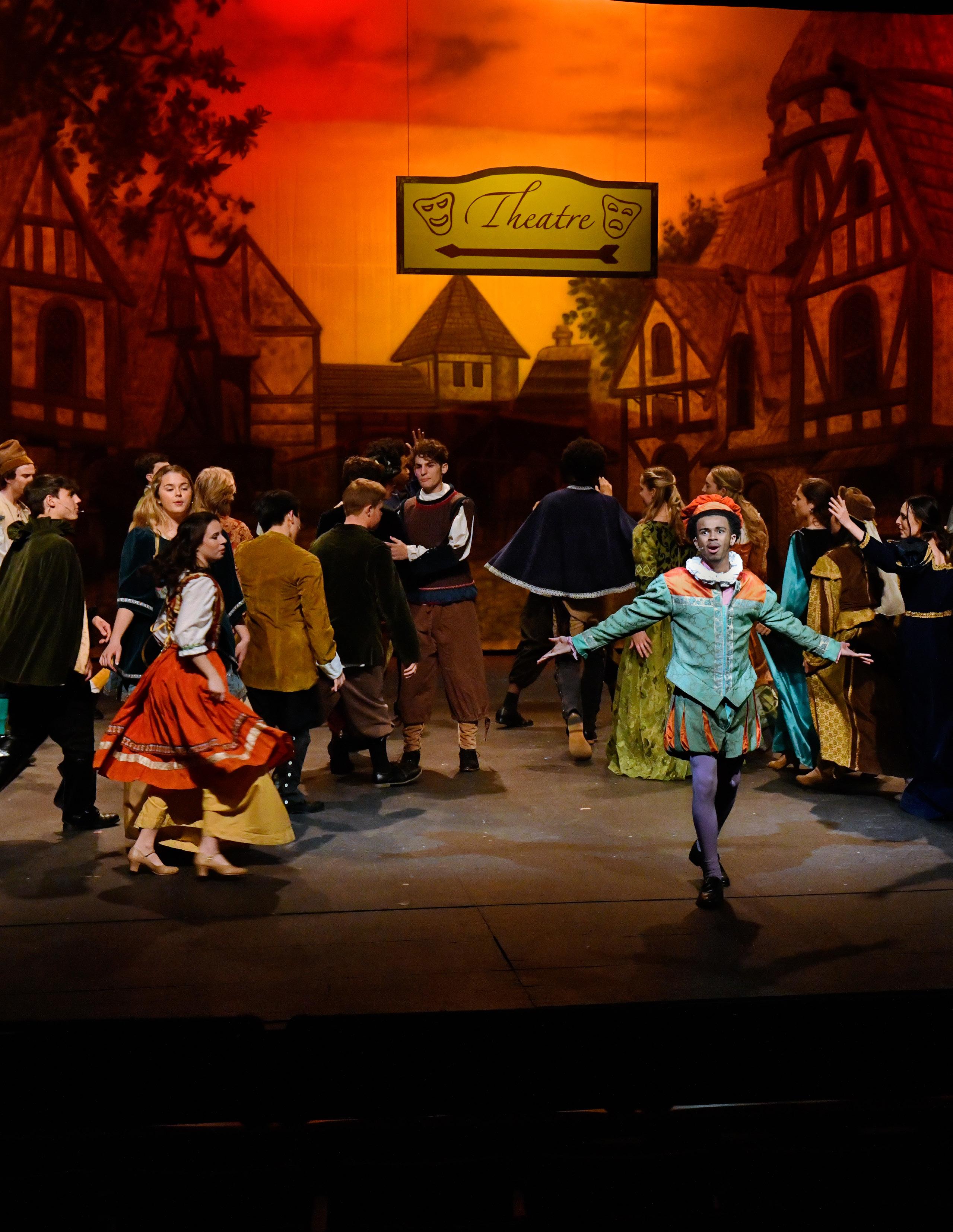
It’s tough being a contemporary of the greatest of all time, and no one knows that better than the Bottom brothers, Nick (Sixth Former Will Rubin) and Nigel (Fifth Former Julian Caesar) in “Something Rotten!” For three days in March, Nick and Nigel shared the Centennial Hall stage with none other than esteemed playwright and Renaissance rockstar William Shakespeare (Fifth Former Harvey Pennington). Through song and dance, “Something Rotten!” showed how the brothers learned to trust themselves more—and William Shakespeare less.
The Addams Family
From April 22 to 24, Wednesday Addams’ new love tested the togetherness of her “all-together ooky” family in the Middle School musical performance of “The Addams Family.” The fun and frightful show added the Beineke family and the Addams family ancestors—from Napoleon to Elvis—to the familiar cast of Addams family characters. Through tangos and torture, the Addams and Beineke families overcame their insecurities and found their focus in love.
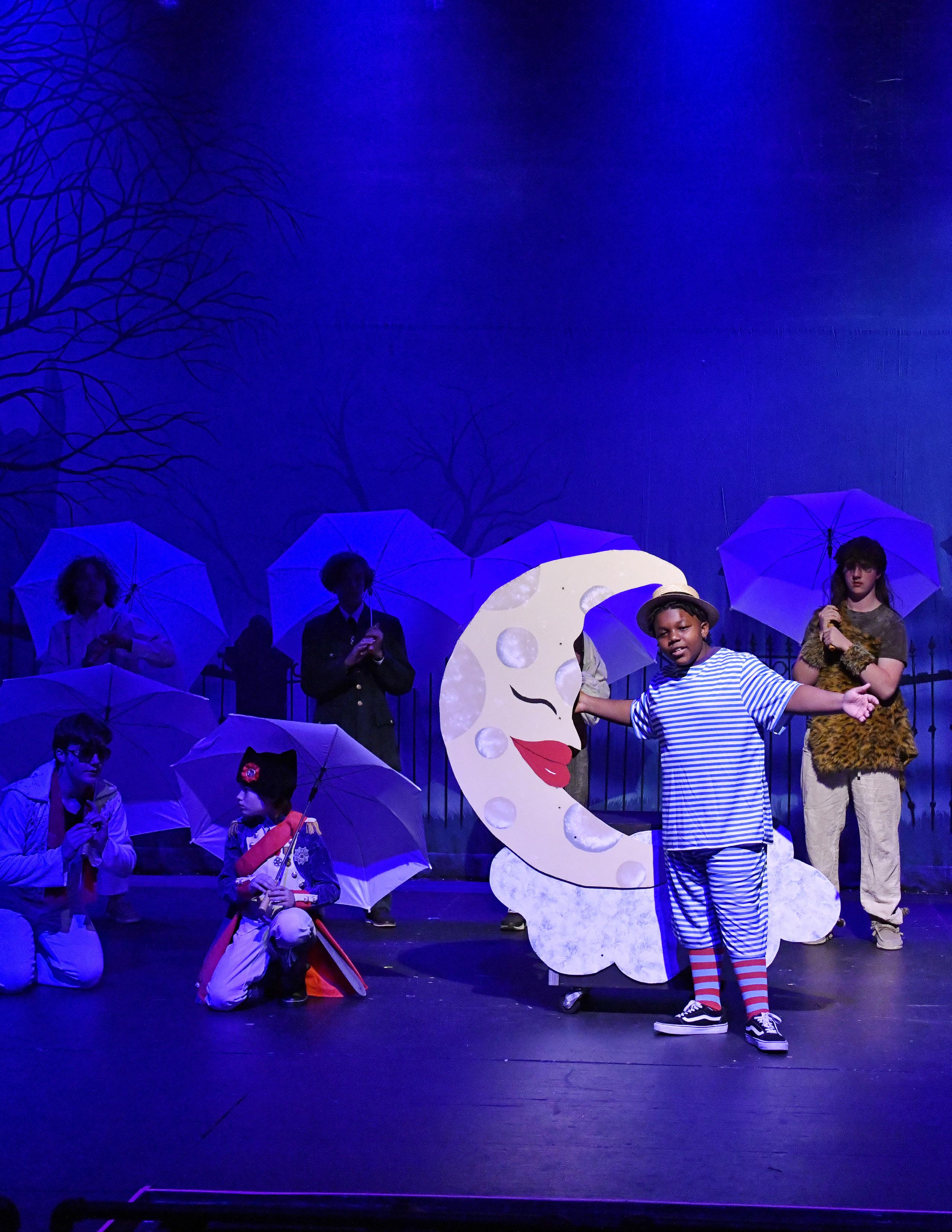
The Monster Mash
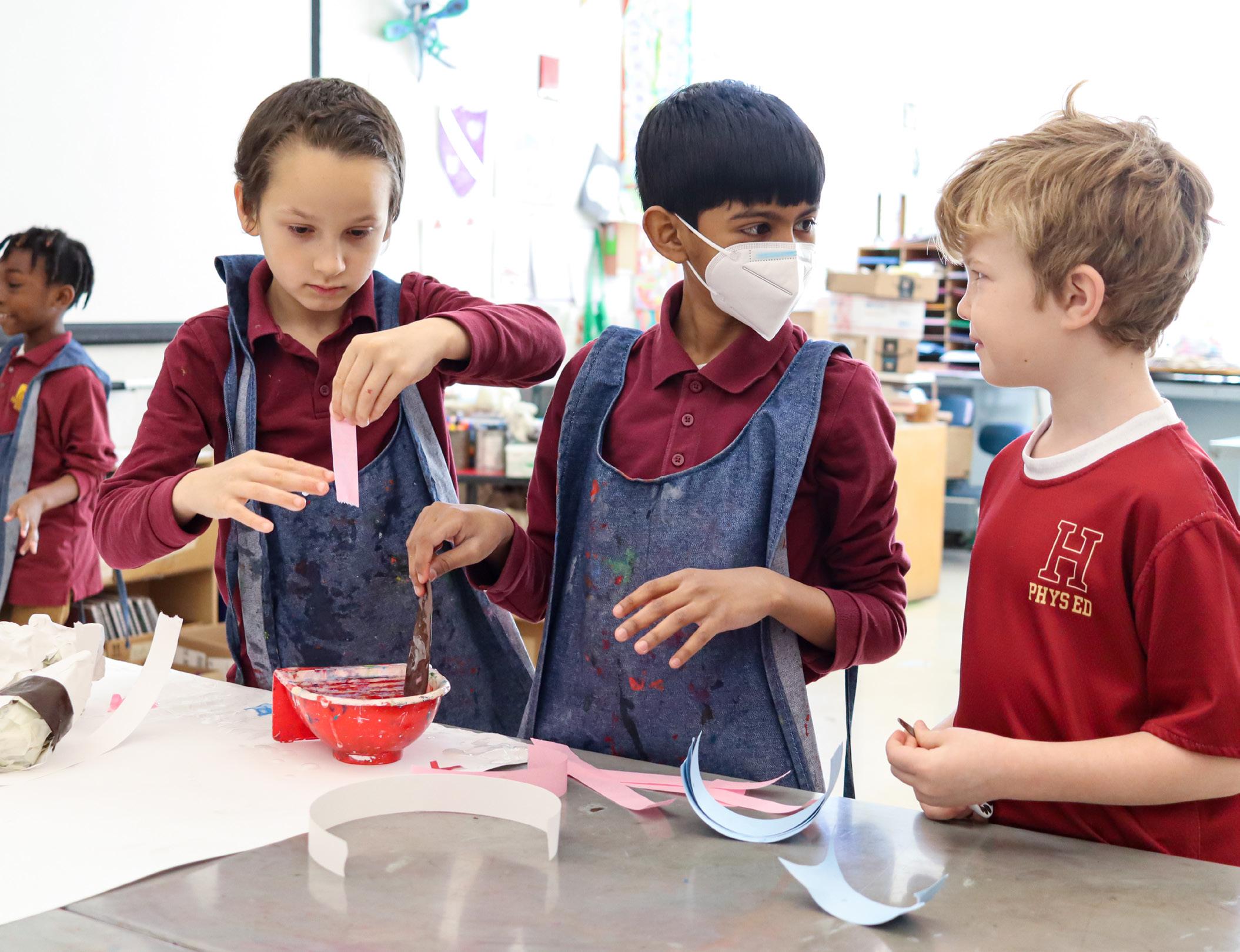
The color of ice cream can be a contentious topic, especially among third graders designing a papier-mâché monster together. Truly, it depends on the flavor, but which sweet treat would their monster prefer?
Lower School art teacher Molly Porter’s take on the longstanding Haverford tradition of the monster project emphasizes this sort of collaboration.
The boys began with their own sheets of paper, where they could draw whatever monsters they imagined. The focus among the boys at this stage in the process was admirable, with the contented silence broken only periodically with an excited announcement—“Mine looks like Spongebob!” and “Mine has a mustache!”
In the next phase, the boys gathered in groups, combining their designs to make miniatures in papier-mâché. This was a crucial stage, moving the project closer to one culminating creation, but also the first real test to their teamwork. As the group with the ice cream-eating monster proved, the boys are ready for the challenge. And ice cream is pink.
Lower School boys singing once again
If you walk by the Lower School music classrooms, you may hear something both delightful and long-awaited by the community: the singing of Haverford’s youngest boys.
After a long hiatus due to COVID-19, Lower School boys, many for the first time, are able to sing in the classroom together. In Lower School music teacher Valerie Case’s classroom, the boys are working to establish healthy vocal habits and proper in tune singing technique.
“For some of the younger students, this is their first time they have sung at school,” said Lower School music teacher Valerie Case. “I was thrilled, but not surprised, at how quickly the boys are demonstrating proficiency in proper singing techniques.”
While the Lower School choir will re-convene in the 2022-23 school year, the boys expressed excitement at being able to sing together again in class. During class time, the boys are learning a variety of new songs, like “Little Liza Jane” and “Money Honey,” as well as performing some old favorites like “Old Mr. Rabbit.”
“The boys love any song that has a game attached to it in some way,” said Case. “To me, the boys learning singing techniques after these long months is providing sheer joy.”
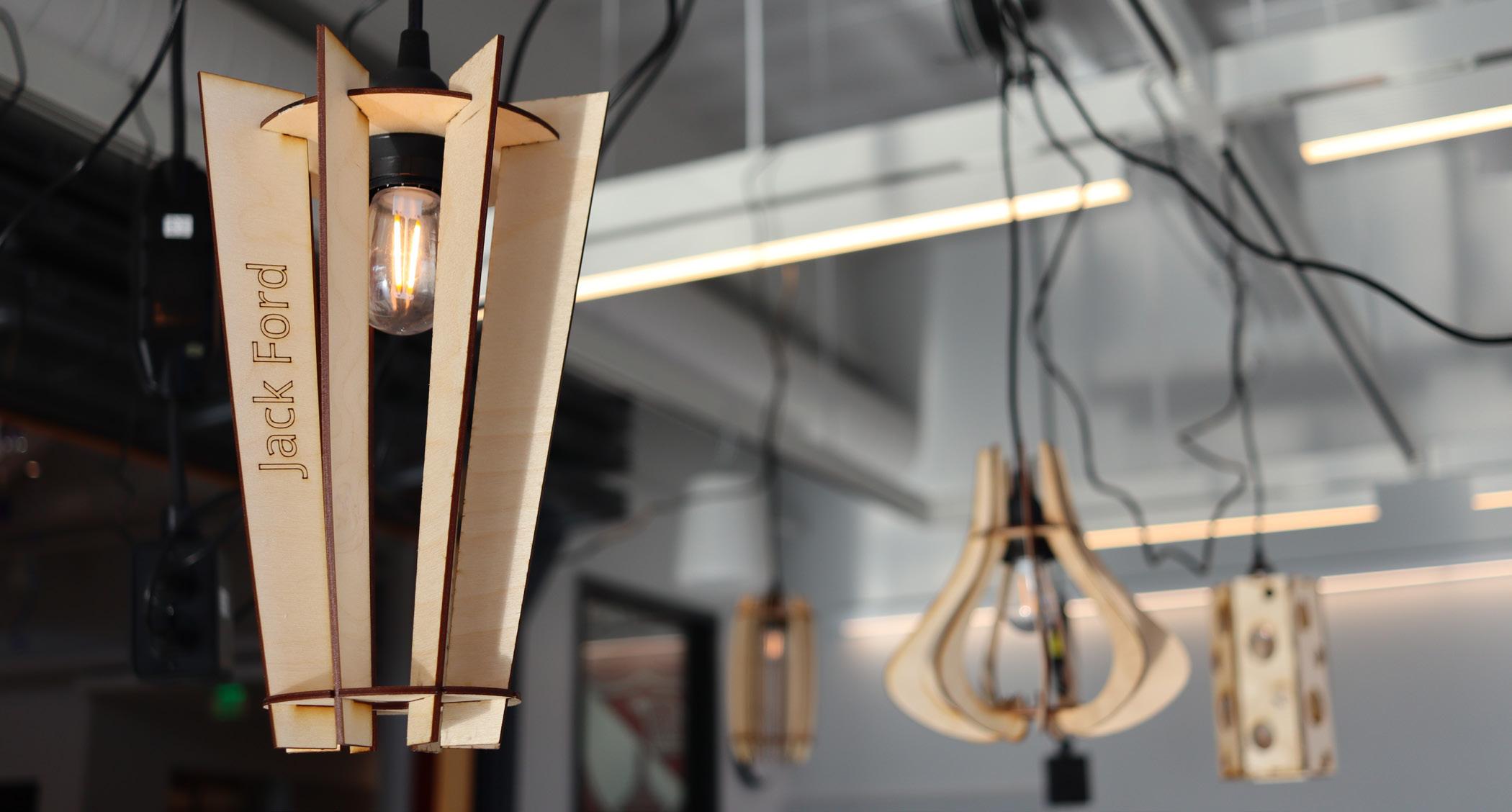
Light as a medium
Wooden lanterns crafted by Form II students in Middle School visual art teacher Nate Pankratz’s class illuminated the Middle School Maker Space this year.
“The objective for our Lantern Project was to ‘shape light,’” as Pankratz explained. “Light was the constant that every student was given for this project. How they chose to shape that light was the variable. Using plywood, math, a set of calipers, and some CAD [Computer-Aided Design] training, boys were asked to design, prototype, and fabricate a hanging lantern.”
The projects required mathematical acuity, with some of the more complex designs involving consultation with Upper School mathematics teacher Nathan Bridge. Bridge helped Second Former Jake Horowitz calculate the obtuse angle of two faces of an icosahedron for his lantern.
As Pankratz shared, “Nate was absolutely dynamite, and took us through the calculations as well as the history of this shape as it related to the golden rectangle, Fibonacci sequence, science, and art history.”
Excellent resources like our faculty, the 3D printer, and the Maker Space enabled students to create these gorgeous works of practical art.
